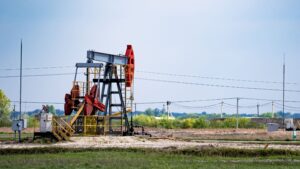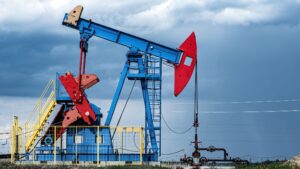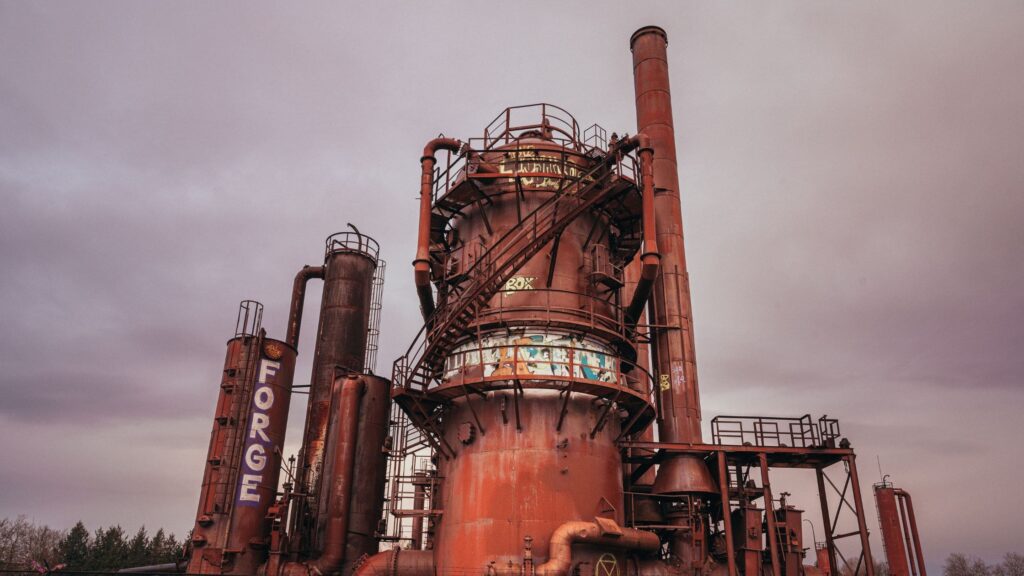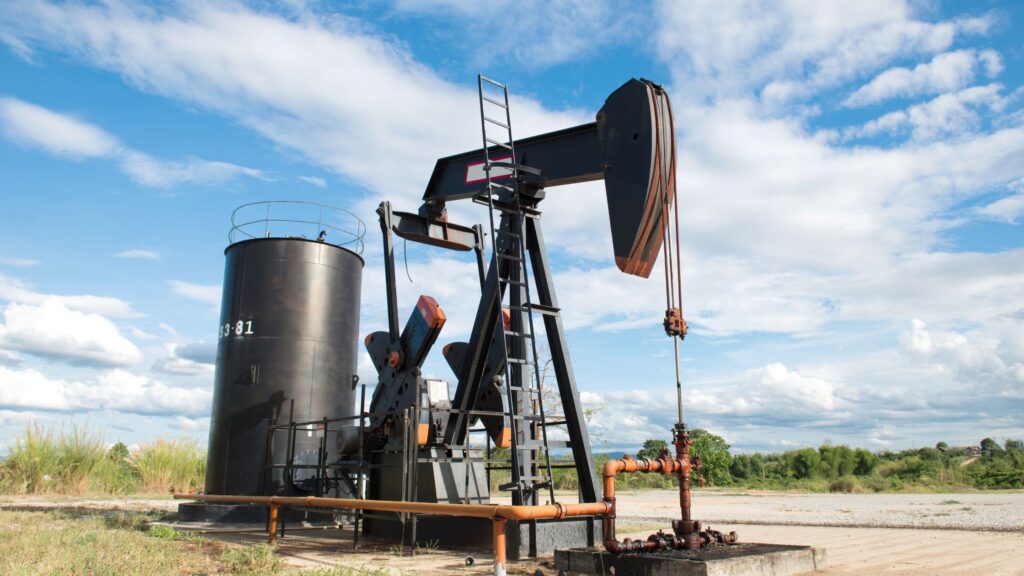What is integrated oil and gas production?

At the heart of it, integrated oil and gas production amalgamates the entire spectrum of the oil and gas industry. This involves exploration for crude oil and natural gas reserves, drilling and extraction processes, refining of these resources into usable petroleum products, and finally, their transportation, storage, marketing, and distribution.
The term “integrated” is particularly apt, as it emphasizes the seamless flow and interconnection of upstream (exploration and production), midstream (transportation and storage), and downstream (refining and distribution) operations.
Why is integration important in the oil and gas industry?
Integration serves as a strategic linchpin for the oil and gas industry, and here’s why:
- Cost-Efficiency: Integration streamlines the production chain, mitigating overheads and redundant processes. By overseeing the entire chain, from exploration to distribution, integrated companies can optimize capital allocation.
- Market Positioning: Integrated companies, by virtue of their comprehensive operations, possess a more resilient position in the energy sector. Their diversification across multiple segments offers them a buffer against volatile market conditions.
- Supply Chain Optimization: An integrated approach ensures continuity, thereby reducing potential bottlenecks and disruptions in the supply chain.
How does the integration process work in oil and gas?
The journey from crude oil reservoirs deep within the earth to the gas stations in our neighborhoods is an intricate one. Here’s a snapshot of this journey:
Exploration
In the vast world of oil and gas, exploration is akin to laying the first stone. Companies, both national and private, conduct extensive market research, using advanced methods and tools to identify potential reserves deep within the Earth’s crust.
- The Role of Technology in Exploration – Advanced tools and resources aid gas exploration. Seismic surveys, for example, give companies a glimpse of the underground formations and help them estimate the volume of oil or natural gas present.
Drilling and Extraction
Post exploration, the next step is drilling. This involves accessing the identified reserves, a challenging process that requires a blend of engineering excellence and technological prowess.
- Different Types of Drilling – There are various drilling methods in the oil and gas industry, each tailored for different types of reserves and geographical conditions. For instance, offshore wind areas might employ different techniques than onshore fields.
- Ensuring Safety and Efficiency – Safety is paramount in this segment of the industry. Proper protocols and state-of-the-art equipment ensure the wellbeing of employees and the environment.
Refining and Processing
Once the crude oil is extracted, it undergoes a metamorphosis. This phase is critical, transforming the crude oil into various petroleum products, setting the stage for their entry into the market.
- Refineries – Refineries play a pivotal role in the oil and gas sector. These vast industrial complexes process the raw crude oil, segmenting it into different products like gasoline, diesel, and liquefied natural gas (LNG).
- The Importance of Quality and Standards – Quality control is crucial. Companies rely heavily on stringent quality checks, ensuring the refined products adhere to both national and global standards.
Transportation and Storage
After refining, the products need to be transported to various parts of the world. Pipelines, ships, and trucks play a pivotal role in this. Proper storage is equally important, ensuring the products remain in top-notch condition until they reach the consumer.
- Pipelines: The Lifelines of the Industry – Pipelines form a significant part of the oil and gas transportation system, especially in countries like Russia, Saudi Arabia, and the US. They ensure a constant and safe flow of products across vast distances.
Marketing and Distribution
The last step of the journey involves marketing these products to various businesses and consumers. This phase is driven by intricate market research, understanding the dynamics of supply and demand, and strategic capital allocation.
- The Role of Independent Companies – While integrated oil giants have a considerable market share, independent companies also play a vital role. They often focus on specific segments, offering specialized services and products.
- Pricing and Revenue – Pricing in the oil and gas industry is influenced by a multitude of factors, including geopolitical situations, global economic conditions, and more. It’s a dynamic sector where companies must continuously adapt to ensure steady revenues.
What types of companies participate in integrated oil and gas production?
The integrated oil and gas landscape is dotted with various players, each with its unique role and contribution.
Major International Oil Companies (IOCs)
ExxonMobil, Chevron, and others are powerhouses in the oil and gas industry. These IOCs dominate a significant portion of the global market. Their influence isn’t just in crude oil production but extends to natural gas exploration, refining, and marketing.
- Operational Scale: Often having a massive presence across different countries, these companies drive a significant volume of the world’s oil production.
- Diverse Interests: They engage in multiple segments of the industry, from upstream exploration to downstream refining and marketing activities.
National Oil Companies (NOCs)
NOCs are primarily state-owned entities. A shining example is Saudi Aramco, an oil behemoth from Saudi Arabia. National oil companies, like Gazprom in Russia or Saudi Aramco in the Middle East, often hold vast reserves and command a significant stake in their country’s energy resources.
- State-backed Support: Their operations, though largely commercial, also support their nation’s economic objectives.
- Geopolitical Influence: Due to their state-owned nature, these companies can wield significant geopolitical influence, often intertwined with national interests.
Independent Oil and Gas Producers
Unlike IOCs or NOCs, independent oil and gas companies like those focusing on natural gas projects or offshore wind exploration tend to be smaller in scale. Their primary focus is on exploration and production.
- Niche Focus: These independent companies tend to focus on specific areas of the oil and gas sector, be it exploration, production, or both.
- Flexibility: Due to their smaller size, they often have the agility to adapt quickly to changing market conditions.
Service and Equipment Providers
A myriad of services, from drilling to refining, is required in the oil and gas industry. Companies in this segment provide the necessary equipment and services.
- Wide Range: Their offerings span from exploration tools, drilling rigs, to equipment for downstream operations.
- Key Players: Companies such as Schlumberger and Halliburton lead in this sector, providing cutting-edge technology and services.
What challenges face integrated oil and gas companies?
Navigating the intricate oil and gas landscape isn’t without its set of challenges:
The integrated oil and gas landscape, though lucrative, is fraught with challenges. These range from geopolitical risks, environmental concerns, to market volatility.
Geopolitical Risks
Oil and gas operations often cross international borders, thereby exposing companies to political unrest and shifting regulations.
- Diverse Operational Regions: Operations in countries like Russia, China, or states in the Middle East can expose businesses to complex geopolitical landscapes.
- Regulatory Changes: Countries may change their stance on oil exploration or refining, affecting companies’ strategies.
Environmental Concerns
With climate change becoming an increasing concern, the oil and gas industry faces both operational and reputational risks.
- Ecological Impact: Activities such as drilling can have potential environmental consequences, leading to backlash from communities or regulatory bodies.
- Transition to Sustainable Energy: As the world leans towards renewable energy, companies need to adapt their strategies, often investing in research and development to keep pace.
Market Volatility
Fluctuating oil and gas prices can significantly impact the revenue streams of these companies.
- Dependence on Global Trends: Factors like global crises, trade wars, or economic downturns can influence oil and gas prices.
- Strategic Responses: Companies often need to recalibrate their capital allocation strategies in response to market conditions.
What are the benefits of being an integrated oil and gas company?
While the challenges are aplenty, the benefits are significant:
- Supply chain optimization: Integrated companies can manage their operations more seamlessly, ensuring smooth operations across upstream and downstream activities.
- Risk mitigation: Such firms often have diversified operations across multiple sectors, which acts as a buffer against market downturns.
- Economies of scale: Being vast, these entities can leverage economies of scale, resulting in cost savings and operational efficiencies. Their integrated models also provide a natural hedge during market fluctuations, allowing them to offset losses in one segment with gains in another.
Integrated models also provide a natural hedge during volatile market conditions, allowing them to balance losses in one segment with gains in another. Moreover, due to their large-scale operations, they can leverage economies of scale to achieve significant operational efficiencies.
What are the environmental implications of integrated operations?
Integrated operations in the oil and gas industry, especially those involving both upstream and downstream activities, have significant ecological implications. With a broad spectrum spanning from exploration to refining and marketing, these operations have myriad environmental touchpoints that merit close scrutiny.
Greenhouse gas emissions
A significant concern in the oil and gas sector is the emission of greenhouse gases, primarily carbon dioxide and methane. As crude oil is extracted, processed, and transported, these emissions contribute heavily to the global carbon footprint.
According to recent data, the gas industry alone is responsible for a sizable share of the world’s total greenhouse gas emissions. This arises not only from the burning of fossil fuels but also from extraction and production activities, transportation via pipelines, and refining processes.
Water use and contamination
The extraction of oil and natural gas often involves hydraulic fracturing, a method that demands vast volumes of water. This intensive water use can strain local resources, especially in regions where water scarcity is a pressing issue.
Additionally, the risk of contamination from spills or leakages poses a threat to both surface and groundwater sources, impacting the ecosystems and communities that rely on these reserves.
Land degradation and habitat disruption
Land plays a crucial role in the oil and gas industry, from exploration sites to storage facilities and refineries. The development of these infrastructures often leads to habitat fragmentation and degradation. F
or instance, drilling operations can disrupt wildlife habitats, leading to a decline in biodiversity. Such activities can also lead to soil erosion and reduced land productivity, with implications for agriculture and local economies.
Waste management
With oil and gas exploration and production come significant volumes of waste. This includes drilling muds, produced water, and other by-products that require careful management. Proper disposal and treatment are essential to prevent environmental contamination. The industry’s waste management practices have seen significant evolution, with an increased focus on recycling and reuse.
How are integrated companies adapting to the renewable energy transition?
The shifting dynamics of the energy sector, driven by climate change concerns and the rise of renewable sources, have necessitated a re-evaluation of strategies by integrated oil and gas companies. Recognizing the need for sustainable growth and the global demand for cleaner energy, these companies are diversifying their portfolios and investing in innovative solutions.
Investing in renewable energy sources
Many oil and gas companies are allocating a portion of their capital to renewable energy projects. From offshore wind farms to solar arrays, these investments signal a recognition of the changing energy landscape. For example, BP, a key player in the industry, has made significant investments in solar and wind energy sectors, acknowledging the important role renewables will play in the future.
Research and development in cleaner technologies
The industry’s response to environmental concerns isn’t limited to diversification alone. There’s a growing interest in research and development aimed at creating cleaner technologies. This includes methods to reduce emissions in the production process, innovative solutions for carbon capture and storage, and the development of biofuels.
Partnerships and acquisitions in the green sector
Collaboration is essential in navigating the energy transition. By forming partnerships or acquiring promising startups in the green sector, integrated companies can accelerate their transition. Chevron, for instance, has partnered with various biofuel companies, aiming to integrate renewable fuels into its product line.
Which are the major global integrated oil and gas companies?
When discussing the oil and gas landscape, several names dominate the industry, reflecting decades or even centuries of operations, vast resources, and extensive reach.
ExxonMobil
Headquartered in the United States, ExxonMobil is one of the world’s largest integrated oil and gas companies. With a history dating back to the late 19th century, its operations span the entire spectrum from exploration to marketing. ExxonMobil’s extensive assets include both upstream and downstream operations, making it a force to reckon with in the industry.
Royal Dutch Shell
With roots in the early 20th century, Royal Dutch Shell, commonly known as Shell, is an Anglo-Dutch company with a vast global footprint. Known for its innovation, Shell has been involved in everything from crude oil exploration to the development of liquefied natural gas technologies.
Chevron
Another major player hailing from the United States, Chevron, boasts a rich history and a vast network of operations. Engaging in both upstream and downstream activities, Chevron has been instrumental in shaping the oil and gas sector.
Total
Total, a French multinational, is one of the “supermajors” in the industry. With a focus on both traditional oil and gas projects as well as renewables, Total aims to be a leading energy provider in the 21st century.
BP
British Petroleum, or BP, has been a mainstay in the oil and gas world for over a century. With operations in all continents, BP’s activities range from exploration to refining and retail.
Saudi Aramco
Originating from the world’s largest crude oil exporter, Saudi Aramco is the national oil company of Saudi Arabia. With vast reserves and extensive operations, it plays a pivotal role in the global energy sector.
How do integrated companies interact with local communities?
In the dynamic world of the oil and gas industry, integrated companies hold a significant position. These conglomerates often extend their operations beyond just drilling and refining, delving deep into the energy sector as a whole. But their operations are not limited to the confines of oil fields and refineries; they have a direct and profound impact on local communities. How do these companies manage such vast operations while also catering to the interests and well-being of the people?
Corporate social responsibility (CSR) has become a cornerstone for many integrated oil and gas companies. It serves as a bridge between the business ambitions of the companies and the aspirations of the communities they operate within. Through CSR, companies engage in activities that go beyond their primary business, focusing on societal and environmental benefits. Some examples include:
- Community Engagement: Hosting open forums, town-hall meetings, or consultations to understand the concerns and needs of local inhabitants.
- Local Development Projects: Infrastructure enhancement, education initiatives, and health programs tailored to uplift the socio-economic status of communities.
Another avenue is the creation and support of local development projects. For instance, if a gas company detects a need for better transportation in a region, it might invest in road projects or support local transportation businesses. These gestures not only foster goodwill but also help companies ensure the smooth running of their operations.
What is the future outlook for integrated oil and gas companies?
The future landscape of the oil and gas exploration sector is as vast and intricate as the underground reservoirs they tap into. Predictions based on current market research indicate a mixture of challenges and opportunities shaped by factors like geopolitical situations, technological advancements, and the pressing issue of climate change.
The role of digitalization and automation
The energy sector, especially the upstream segment of oil and gas, is undergoing a digital transformation. Automation and digitalization are not mere buzzwords but pivotal tools shaping the future. With digital tools, companies can make more accurate forecasts, optimize operations, and enhance safety measures. Furthermore, with advanced algorithms, oil production can be maximized while minimizing wastage.
Potential for biofuels and hydrogen
With the world’s increasing focus on climate change, the search for cleaner energy resources has intensified. Integrated oil and gas companies are diversifying their portfolios by investing in biofuels and hydrogen production. Such diversification not only positions them as environmentally conscious businesses but also taps into a burgeoning market, ensuring sustained revenues.
Mergers, acquisitions, and potential market shifts
The industry is characterized by a constant rise and ebb of companies, and mergers and acquisitions play a pivotal role. For example, giants like Saudi Aramco or Chevron have often expanded their operations by assimilating smaller independent companies or entering strategic alliances. Such activities often result in market shifts, providing a fresh direction to the oil and gas exploration methods and strategies.
Conclusion
Integrated oil and gas production is more than just extracting crude oil and selling petroleum products. It’s about being a part of the larger energy sector, influencing economies, shaping societies, and charting the future direction of the industry.
With the combined challenges and benefits, these companies are poised at a crucial juncture. As they evolve, their strategies and decisions will shape not only their profits but also the world’s energy landscape.








